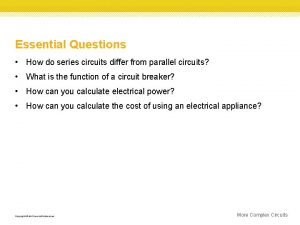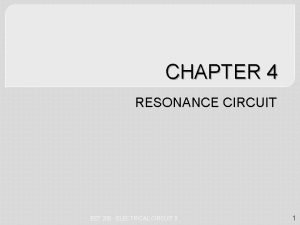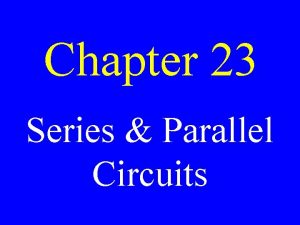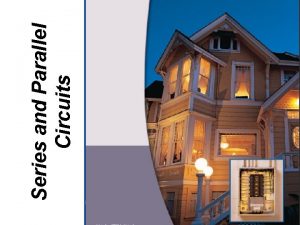Series vs Parallel Circuits Series Circuits The flow





- Slides: 5

Series vs Parallel Circuits

Series Circuits • The flow of electrons follows only one path • This is achieved by connecting the loads in a chain • Example: plugging a toaster and kettle into the same outlet. If one stops working so will the other

What happens to Voltage and Current in Series? • http: //resources. schoolscience. co. uk/British. Energy/11 -14/circh 3 pg 1. html Challenge 2 • The more batteries you add the brighter the bulb • If you add too many batteries the bulb burns out because it can’t handle the voltage. • Challenge 5. • As you add more light bulbs the voltage needs to be shared across all loads so the lights get dimmer. • Challenge 3. • All components share the same current. • Challenge 4. • As you increase the number of batteries current increases. • Challenge 6. • The more lamps (resistance) the harder it is for current to flow • ****** Ammeters are always placed in series and Voltmeters are always placed in Parallel ******

Parallel Circuits • The flow of electrons follows multiple paths so electrons can flow more than one way • Example: The electrical panel in your home is connected in parallel. If your stove blows a fuse the fridge still works.

What happens to Voltage and Current in Parallel? • Challenge 8. • When we connect one lamp to the battery it takes a current of 0. 4 A from the battery. • When we connect the second lamp in parallel, it comes with the same brightness because the electrons have their own path so they don’t encounter resistance. • At the battery the current adds up so the current being taken from the battery is 0. 8 A(twice as much as before • All components share the same current • Let’s try some examples together Read the Summary on Page 575 Chapter Review pg 580 -583 #1, 2, 3, 7, 9, 16, 23, 24, 25 Self Quiz Pg 582 -583 #1 -10, 15, 16 Unit Test Pg 588 -593 #4, 5, 10, 11, 13, 14, 15, 19 -38, 54, 62, 67, 68









